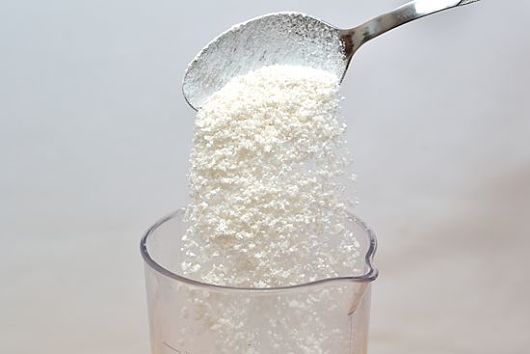New Rice Flour Key to Food Security
 Nutrition is a basic human need, and the lack of nutrition is a sad result of the poverty plaguing so much of the world. South Asia, one of the largest producers of rice, also has the highest overall number of hungry people in the world, with a current estimate at 295 million. A new kind of rice flour could help.
Nutrition is a basic human need, and the lack of nutrition is a sad result of the poverty plaguing so much of the world. South Asia, one of the largest producers of rice, also has the highest overall number of hungry people in the world, with a current estimate at 295 million. A new kind of rice flour could help.
Food insecurity is defined by Oxford Dictionaries as “the state of being without reliable access to a sufficient quantity of affordable, nutritious food.”
Rice flour is a kind of flour made from finely milled rice. It can be a good substitute for wheat flour because it does not cause digestive system irritation. It is used in many of the foods eaten across South Asia, and although wheat flour is slightly higher in nutrition than rice flour, rice is grown in abundance compared to wheat across Asia.
The problem with “normal” rice flour is that it is typically not as efficient at making bread as wheat flour, due to the presence of a particular protein called PDIL1. Researchers studying protein compounds in rice flour at Yamagata University in Japan have discovered that rice flour deficient in the PDIL1 protein active during seed development can produce dough far superior to normal rice flour.
A type of rice flour better suited to make bread could be an incredible leap forward in the fight to end global poverty because more food could be made in a better way across the developing world where rice is widely grown, thus improving food security in poverty-stricken areas.
According to the World Food Programme, hunger kills more people every year than HIV/AIDS, malaria and tuberculosis combined.
Some 795 million people in the world do not have enough food to lead a healthy, active life. That’s about one in nine people on Earth.
The vast majority of the world’s hungry people live in developing countries, where 13.5% of the population is undernourished.
Asia is the continent with the most starving people—two-thirds of its total population. The percentage in southern Asia has fallen in recent years but in west Asia it has increased slightly.
Sub-Saharan Africa is the region with the highest prevalence (percentage of population) of hunger. One person in four there is undernourished.
Poor nutrition causes nearly half (45%) of deaths in children under five—3.1 million children each year.
One out of six children, roughly 100 million, in developing countries is underweight. One in four of the world’s children are stunted. In developing countries, the proportion can rise to one in three.
If women farmers had the same access to resources as men, the number of hungry in the world could be reduced by up to 150 million.
66 million primary school-age children attend classes hungry across the developing world, with 23 million in Africa alone.
The World Food Programme calculates that $3.2 billion is needed per year to reach all 66 million hungry school-age children.
With the new improved rice flour, dough becomes easily stretched and less sticky. It also holds bubbles better during fermentation and baking, and holds its shape and texture after baking. Researchers are already experimenting with PDIL1-deficient rice plants that can be grown in varying climates to improve food security and nutrition globally.
– Jason Zimmerman
Sources: Economic Times, SciDev, Phys
Photo: Brittany Angell
